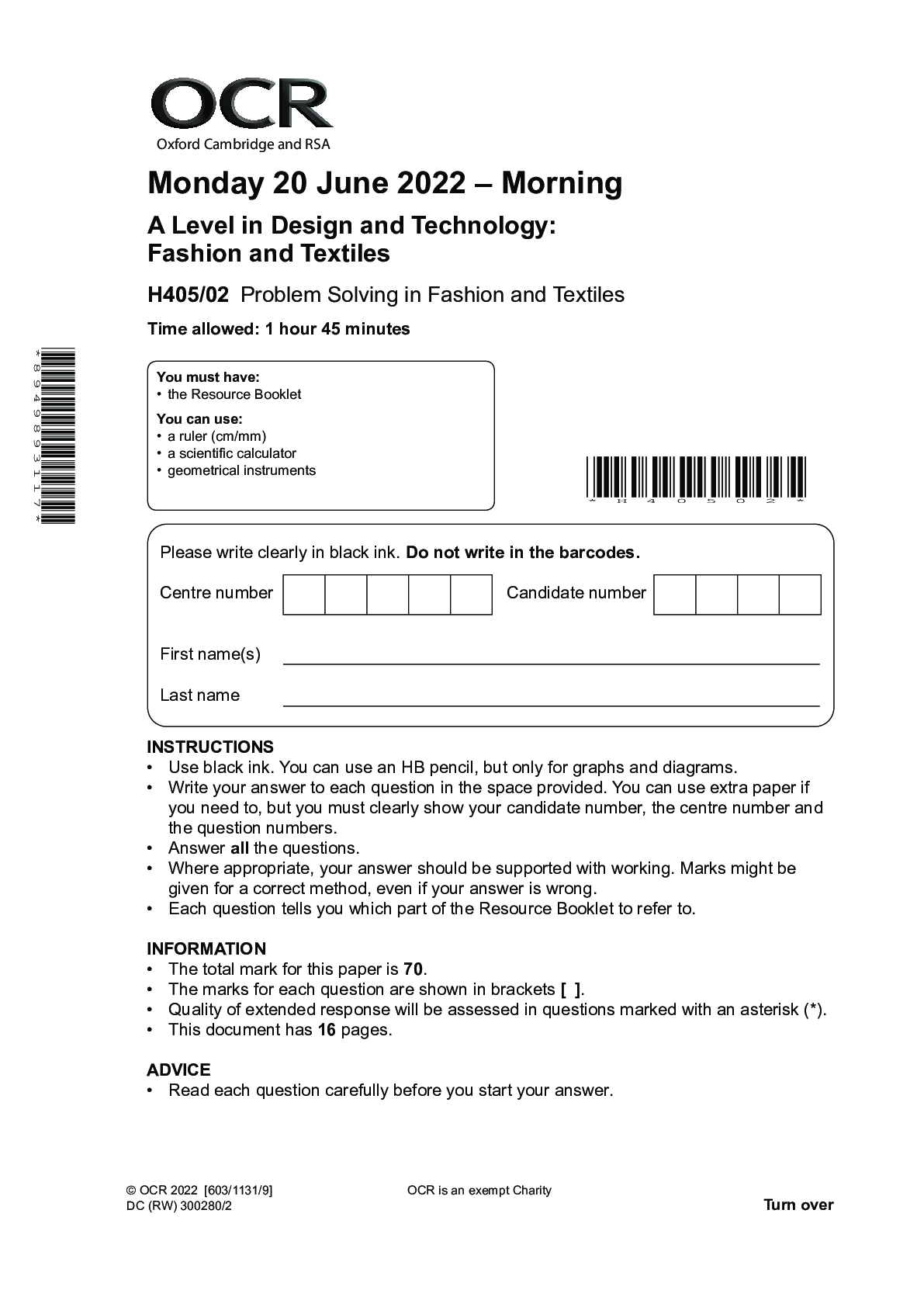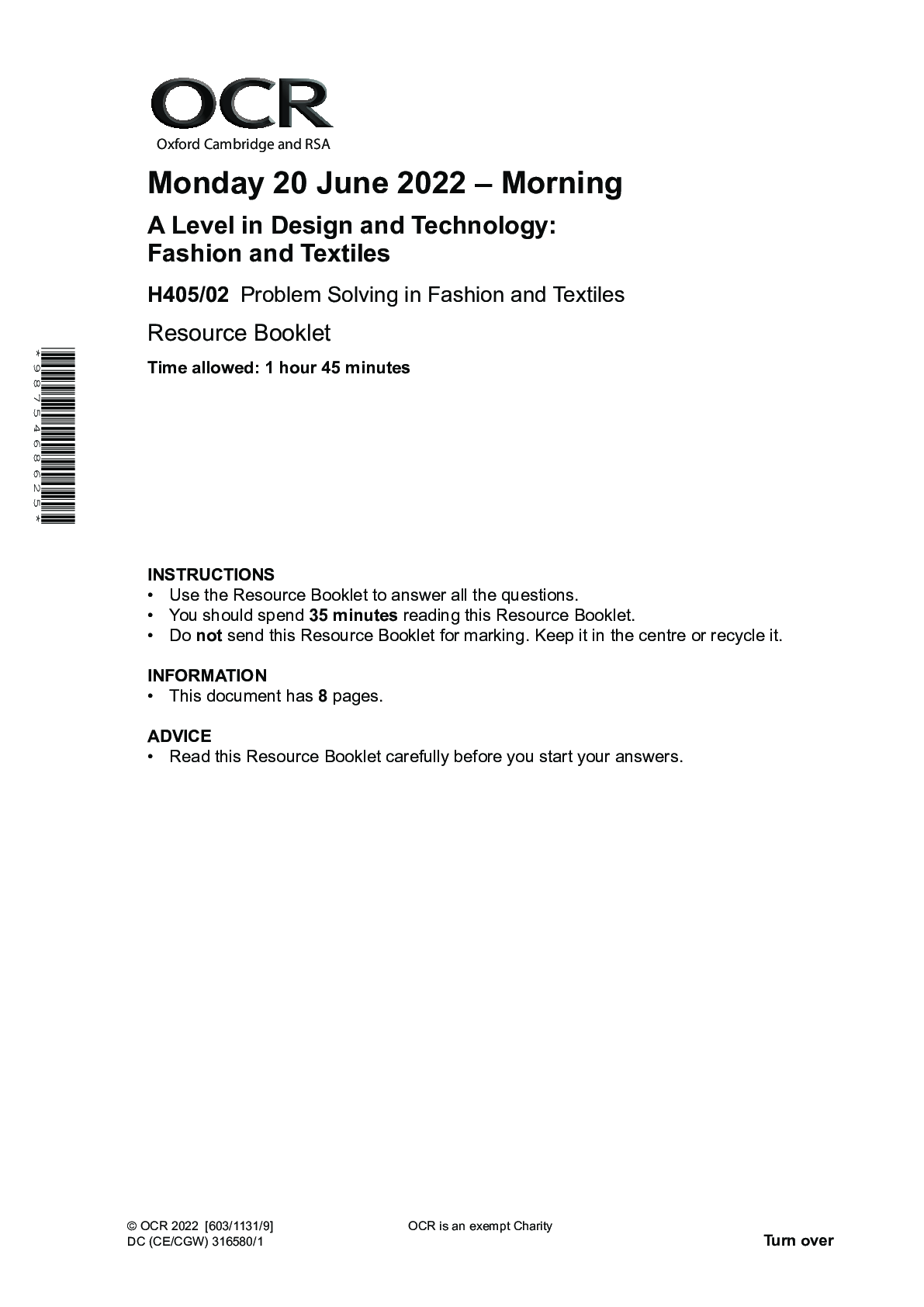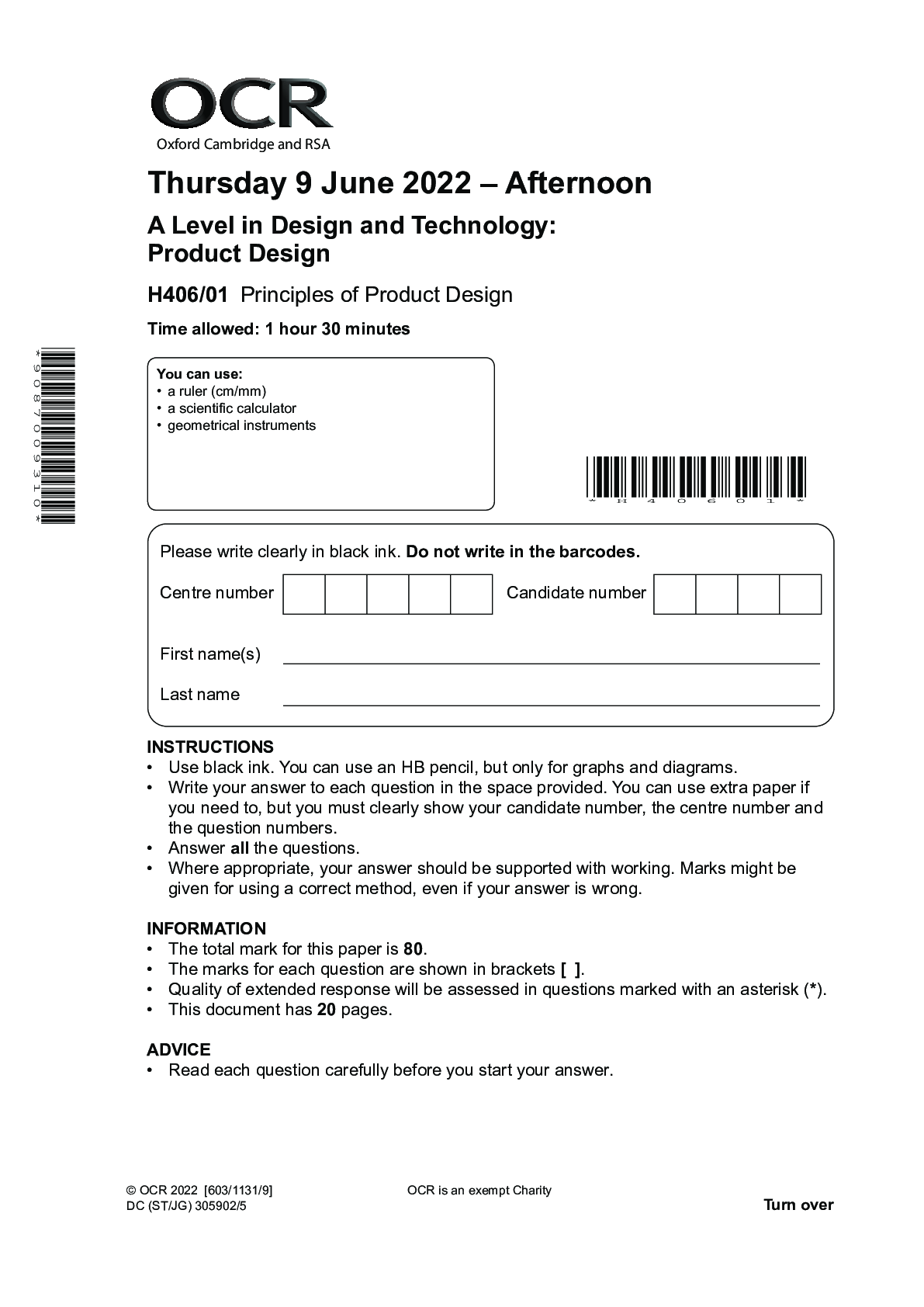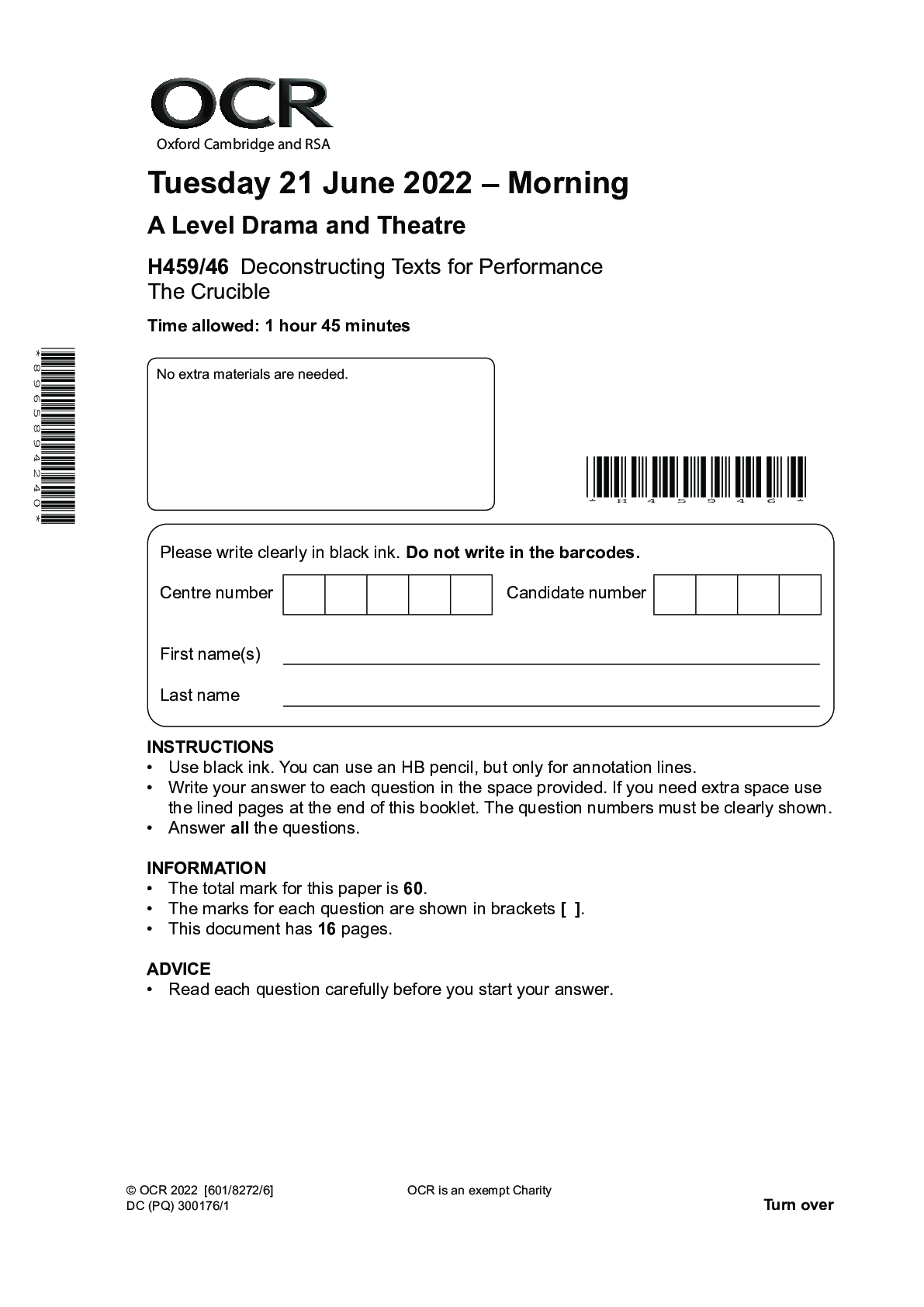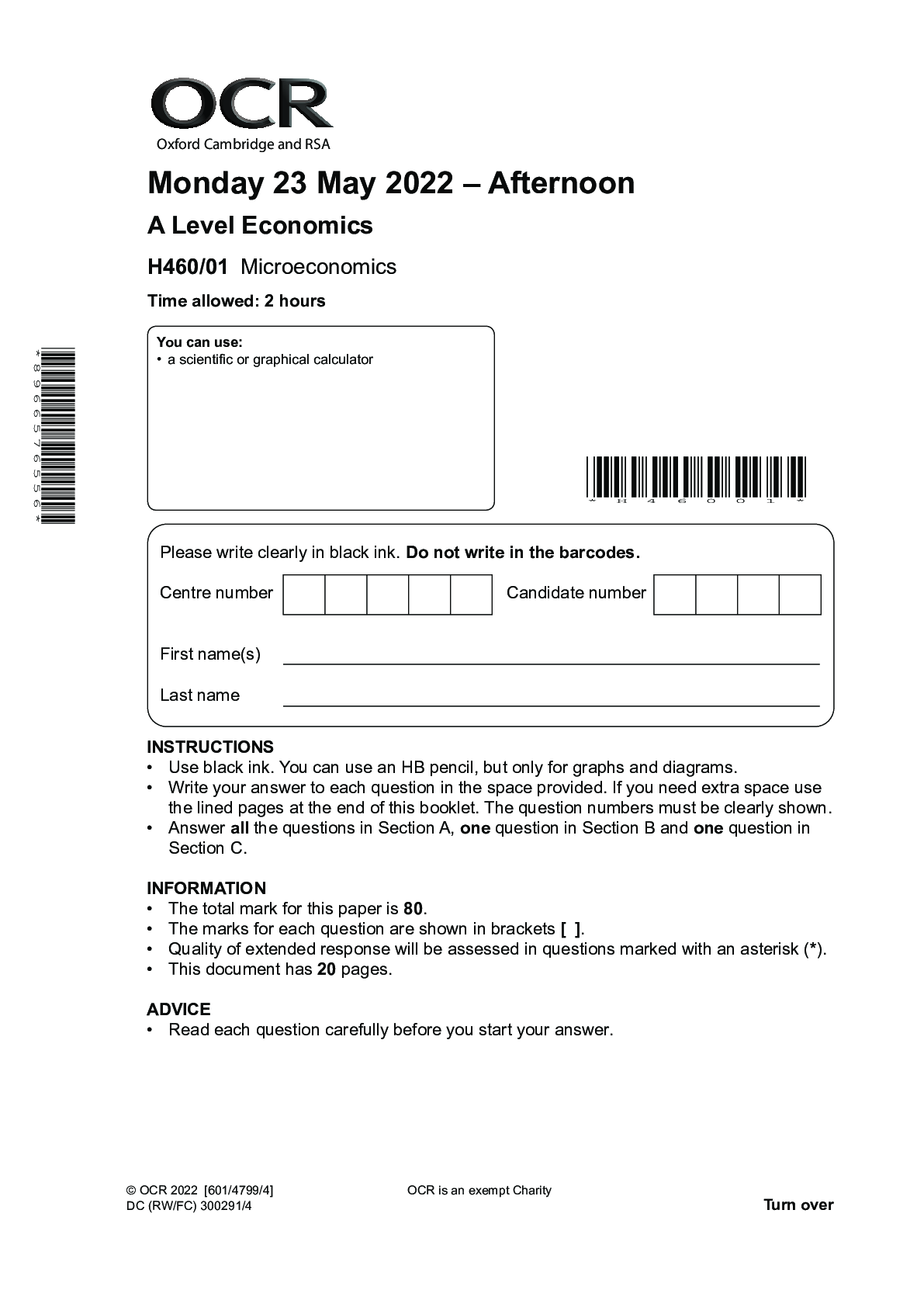Biology > As Level Question Papers > Friday 24 June 2022 – Morning A Level Biology B (Advancing Biology) H422/03 Practical skills in bi (All)
Friday 24 June 2022 – Morning A Level Biology B (Advancing Biology) H422/03 Practical skills in biology
Document Content and Description Below
Friday 24 June 2022 – Morning A Level Biology B (Advancing Biology) H422/03 Practical skills in biology Time allowed: 1 hour 30 minutes * H 4 2 2 0 3 * INSTR... UCTIONS • Use black ink. You can use an HB pencil, but only for graphs and diagrams. • Write your answer to each question in the space provided. If you need extra space use the lined pages at the end of this booklet. The question numbers must be clearly shown. • Answer all the questions. • Where appropriate, your answer should be supported with working. Marks might be given for using a correct method, even if your answer is wrong. INFORMATION • The total mark for this paper is 60. • The marks for each question are shown in brackets [ ]. • Quality of extended response will be assessed in questions marked with an asterisk (*). • This document has 20 pages. ADVICE • Read each question carefully before you start your answer. © OCR 2022 [601/4720/9] DC (ST/JG) 301348/6 OCR is an exempt Charity Turn over Answer all the questions. 1 (a) Fig. 1.1 shows a light micrograph of pancreatic tissue. X Y ×360 Fig. 1.1 (i) State one function of the cell labelled X. ...................................................................................................................................... [1] (ii) Name the two different types of cell in the region labelled Y. ...................................................................................................................................... [1] (iii) The diameter of one region of pancreatic tissue is represented by the line Z. Calculate the actual diameter of the region labelled Z. Give your answer in µm and to 3 significant figures. Actual diameter = µm [2] (iv) A stage micrometer can be used when measuring the linear dimensions of cells, such as those of the pancreatic tissue, viewed under a light microscope. Outline how a stage micrometer is used to measure the linear dimensions of cells. ........................................................................................................................................... ........................................................................................................................................... ........................................................................................................................................... ........................................................................................................................................... ...................................................................................................................................... [2] (b) The pancreas has an essential role in controlling blood glucose concentration. A person was given a glucose tolerance test. Two months later, the same person was given a fasting blood glucose test. The table shows the results of the two tests. Glucose tolerance test Fasting blood glucose test Blood glucose concentration 2 hours after the beginning of the test (mmol dm–3) 10.7 7.0 Suggest what conclusions can be made from the results of the two tests. ................................................................................................................................................... ................................................................................................................................................... ................................................................................................................................................... ................................................................................................................................................... .............................................................................................................................................. [2] (c) An incomplete structure of α-glucose is shown in Fig. 1.2. CH2OH H OH Fig. 1.2 Complete the structure of α-glucose in Fig. 1.2 to show all of the atoms in the structure. [1] (d) The table lists glucose and two other carbohydrate molecules: lactose and amylose. Fill in the table to show, for each carbohydrate, a reagent that would give a positive result when used in a test to help identify the carbohydrate and the number of glycosidic bonds in each molecule. Carbohydrate molecule Reagent used in test for identification Number of glycosidic bonds per molecule Glucose Lactose Amylose many [2] 2 Drugs such as alcohol, heroin and caffeine produce psychological and physical effects in people. (a) A group of scientists assessed the harm caused by various drugs, including alcohol and heroin. The scientists produced weighted ‘harm scores’ for the drugs in several categories. Some of the scientists’ harm scores for alcohol and heroin are shown in Fig. 2.1. 15 10 Harm score 5 Categories: Dependency Deaths from drug use Economic cost Crime Alcohol Heroin Fig. 2.1 A student looked at Fig. 2.1 and concluded that ‘heroin is more harmful than alcohol’. Evaluate the student’s conclusion. ................................................................................................................................................... ................................................................................................................................................... ................................................................................................................................................... ................................................................................................................................................... ................................................................................................................................................... ................................................................................................................................................... ................................................................................................................................................... ................................................................................................................................................... ................................................................................................................................................... .............................................................................................................................................. [4] (b) Alcohol and heroin both affect the activity of neurones. Fig. 2.2 shows the binding sites of alcohol and heroin at a synapse that uses the neurotransmitter GABA. Presynaptic neurone GABA (neurotransmitter) Heroin receptor The binding of heroin causes voltage-dependent Ca2+ ion channels to remain closed and K+ ions to diffuse out of the neurone. GABA receptor A Cl – ion channel is opened when either GABA or alcohol binds to the GABA receptor. Alcohol keeps the channel open for a longer time. Postsynaptic neurone Fig. 2.2 (i) State the type of membrane protein represented by the GABA receptor. ...................................................................................................................................... [1] (ii) Compare and explain the effects of alcohol and heroin on the postsynaptic neurone in Fig. 2.2. ........................................................................................................................................... ........................................................................................................................................... ........................................................................................................................................... ........................................................................................................................................... ........................................................................................................................................... ........................................................................................................................................... ........................................................................................................................................... ...................................................................................................................................... [3] (c) * A student planned to test the effect of caffeine on reaction time. The student decided to assess reaction time using a ‘ruler drop’ test. They planned to record the time taken for each participant to catch a ruler after it was dropped. The student had access to standard laboratory equipment, including rulers, and a caffeinated drink of known concentration. Outline an experimental plan that the student could use to investigate and statistically test the effect of caffeine on reaction time. ................................................................................................................................................... ................................................................................................................................................... ................................................................................................................................................... ................................................................................................................................................... ................................................................................................................................................... ................................................................................................................................................... ................................................................................................................................................... ................................................................................................................................................... ................................................................................................................................................... ................................................................................................................................................... ................................................................................................................................................... ................................................................................................................................................... ................................................................................................................................................... ................................................................................................................................................... .............................................................................................................................................. [6] Additional answer space if required. ................................................................................................................................................... ................................................................................................................................................... ................................................................................................................................................... ................................................................................................................................................... ................................................................................................................................................... 3 Photosynthetic pigments absorb light energy, which is used during the production of ATP and NADPH in the light-dependent reactions of photosynthesis. (a) Fig. 3.1 shows a paper chromatogram produced with four photosynthetic pigments. Solvent front Origin Fig. 3.1 Carotene Chlorophyll a Chlorophyll b Xanthophyll (i) Use Fig. 3.1 to calculate the Rf value of chlorophyll a. Give your answer to 2 significant figures. Rf = [2] (ii) Another student carried out paper chromatography on the four photosynthetic pigments but they used a different solvent. Suggest why the Rf values obtained by the student would have been different to those obtained from the chromatogram shown in Fig. 3.1. ........................................................................................................................................... .............................................................................................................. [Show More]
Last updated: 10 months ago
Preview 1 out of 24 pages
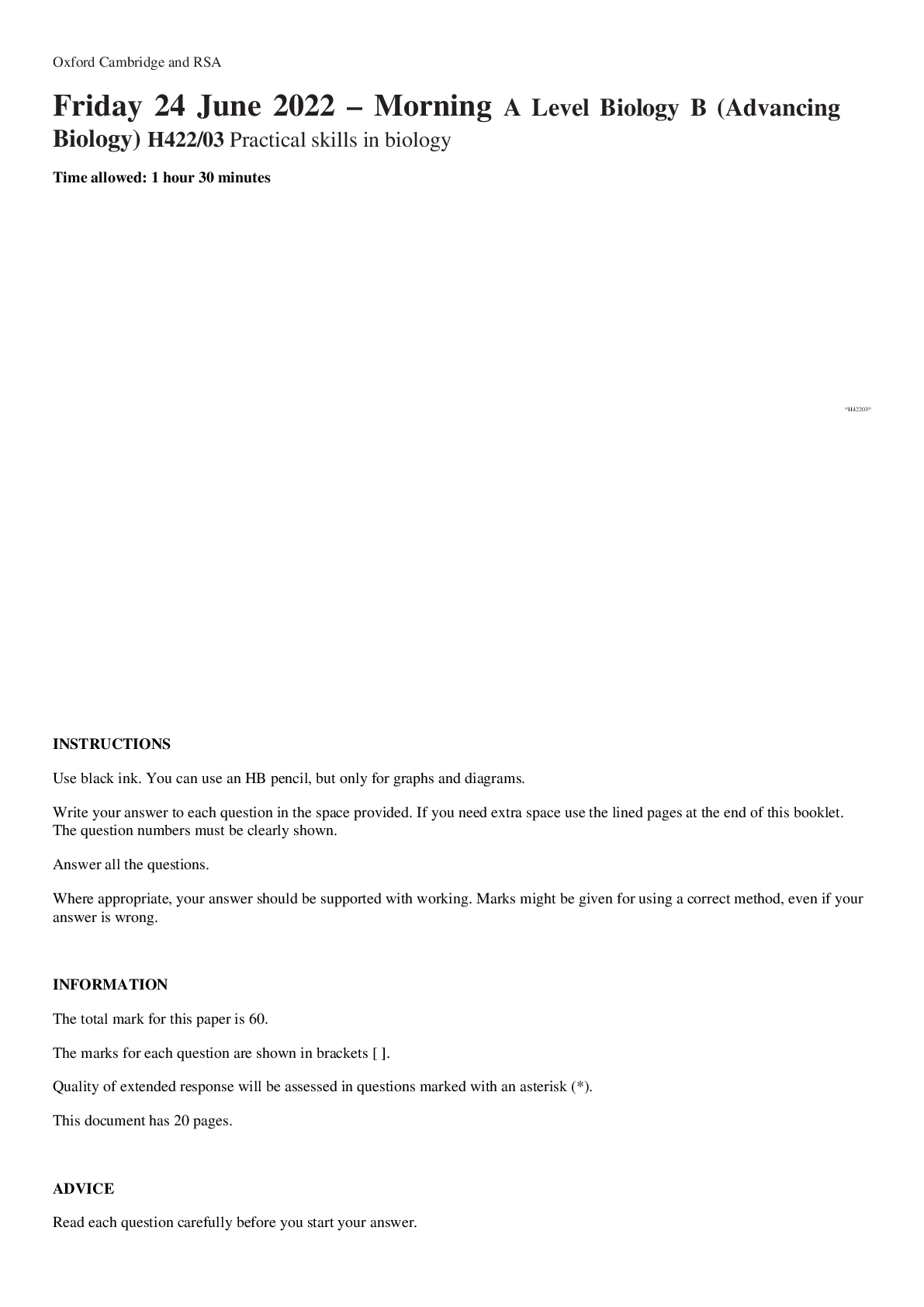
Reviews( 0 )
Document information
Connected school, study & course
About the document
Uploaded On
Jun 14, 2023
Number of pages
24
Written in
Additional information
This document has been written for:
Uploaded
Jun 14, 2023
Downloads
0
Views
81

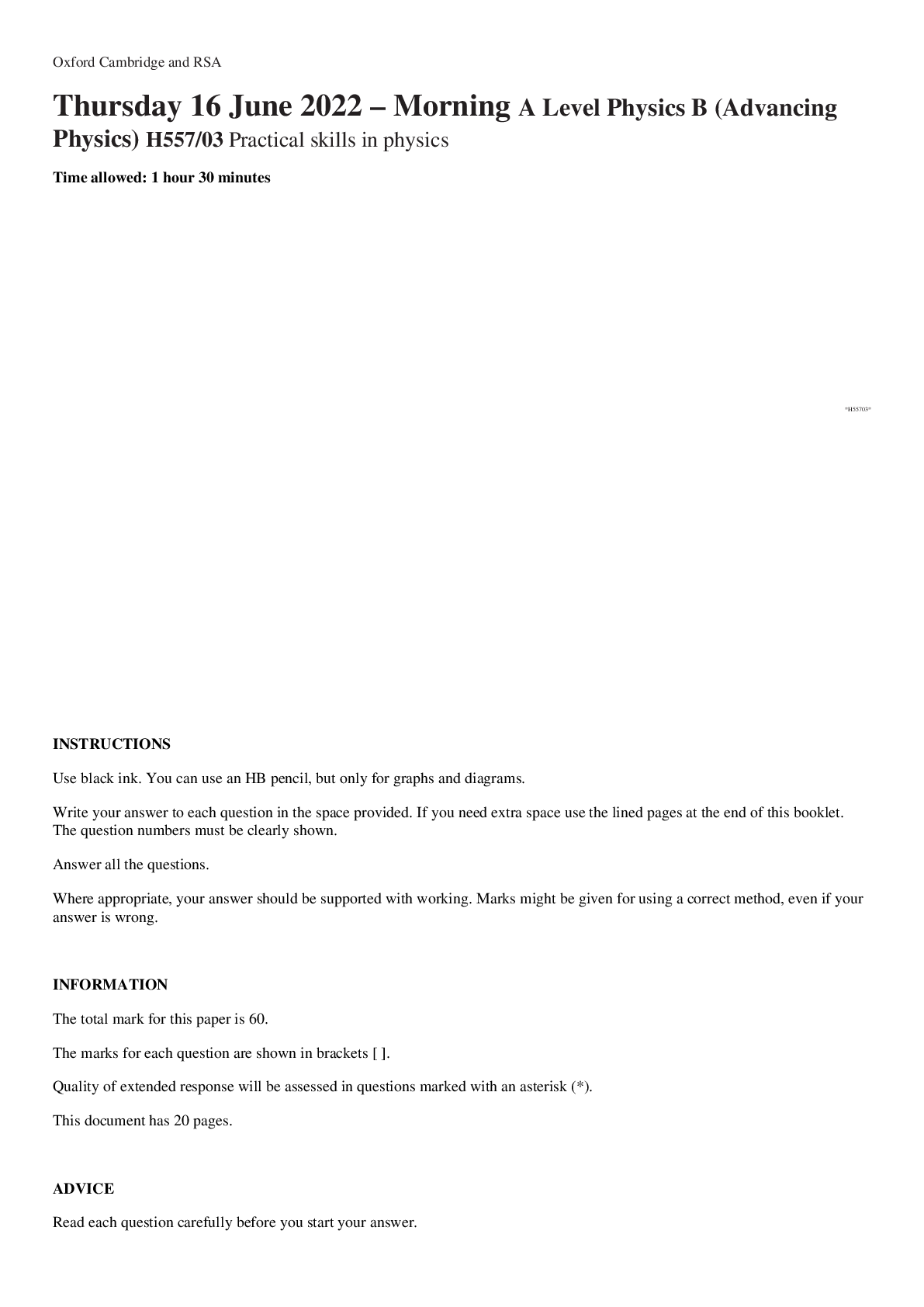
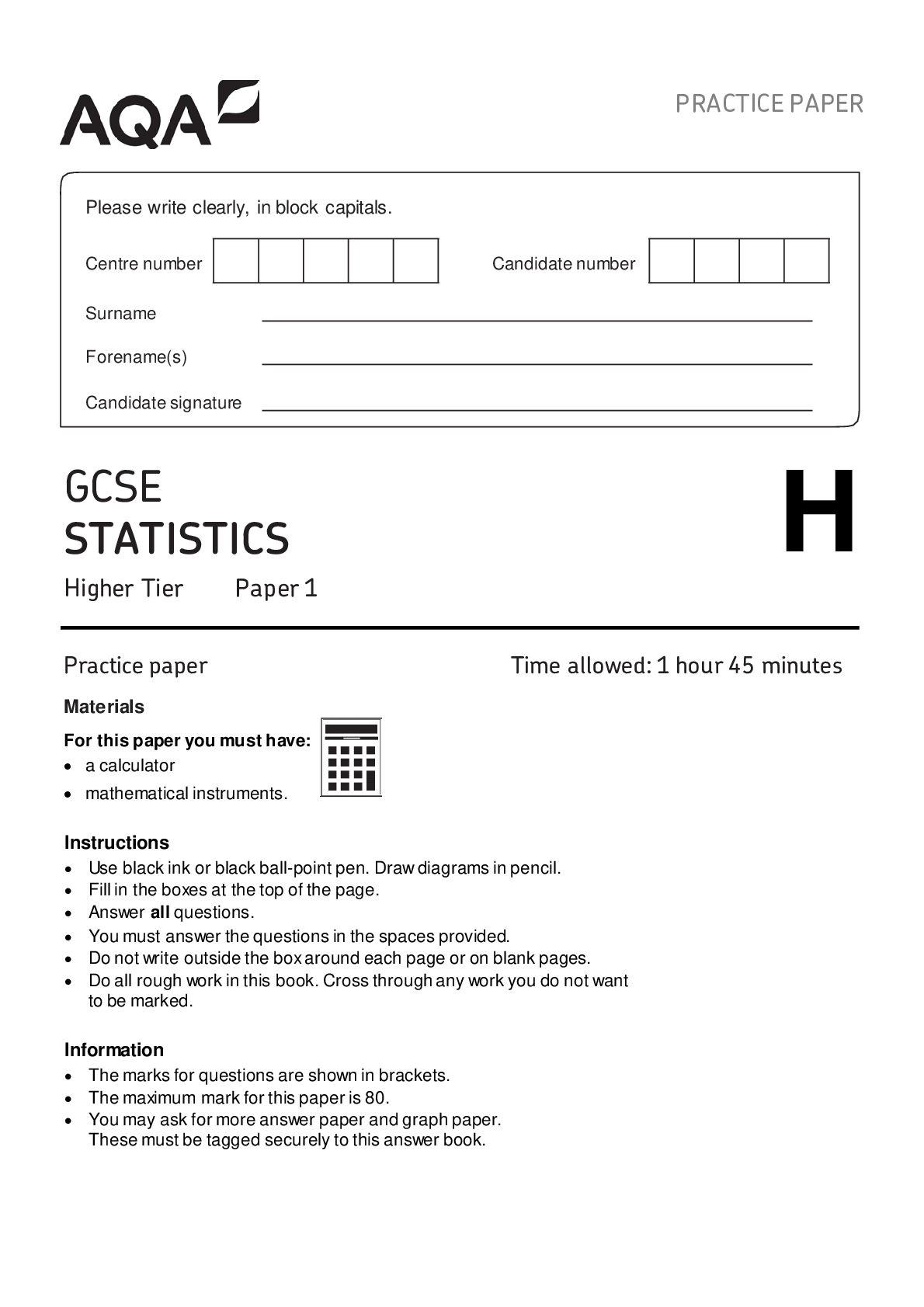


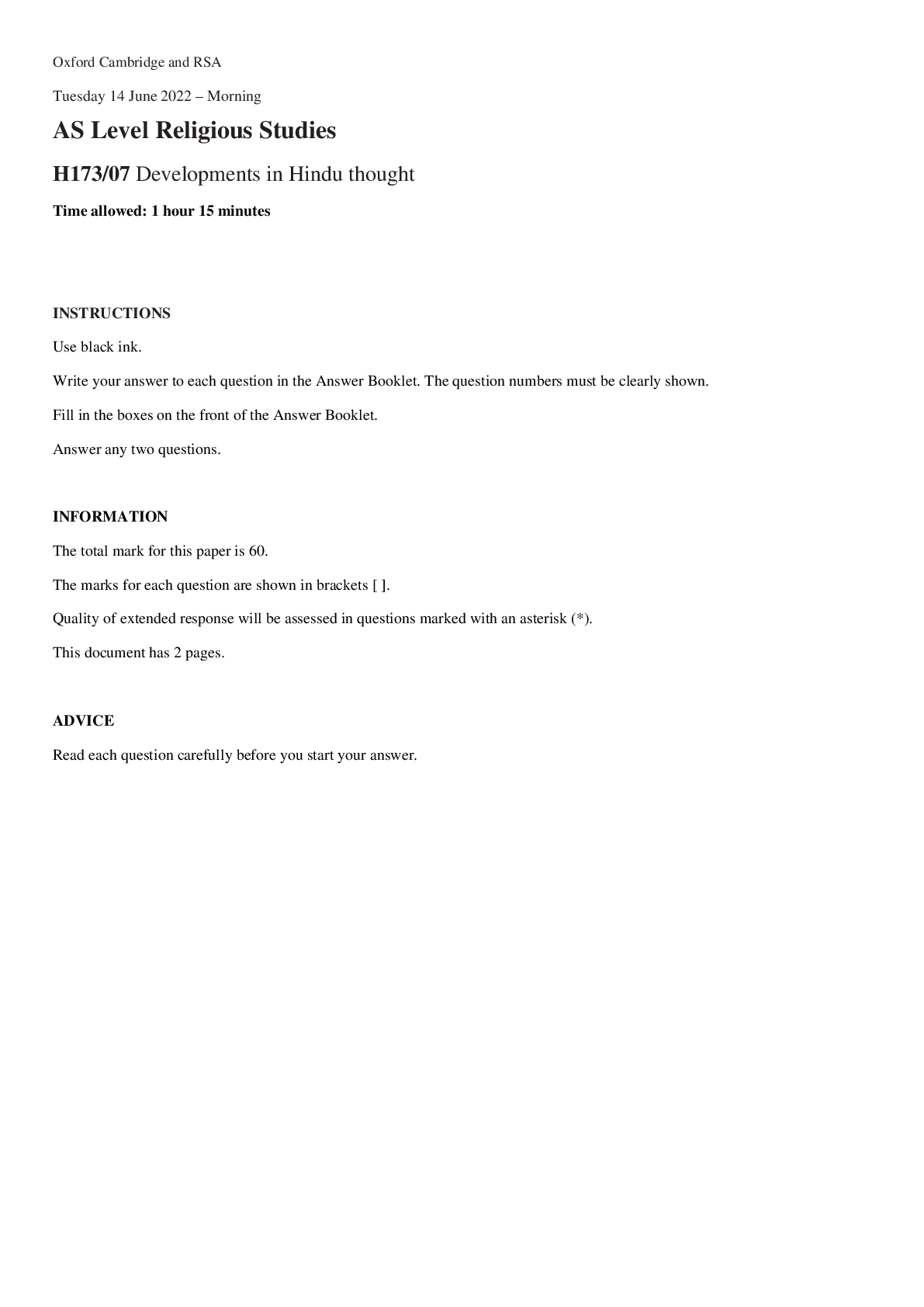
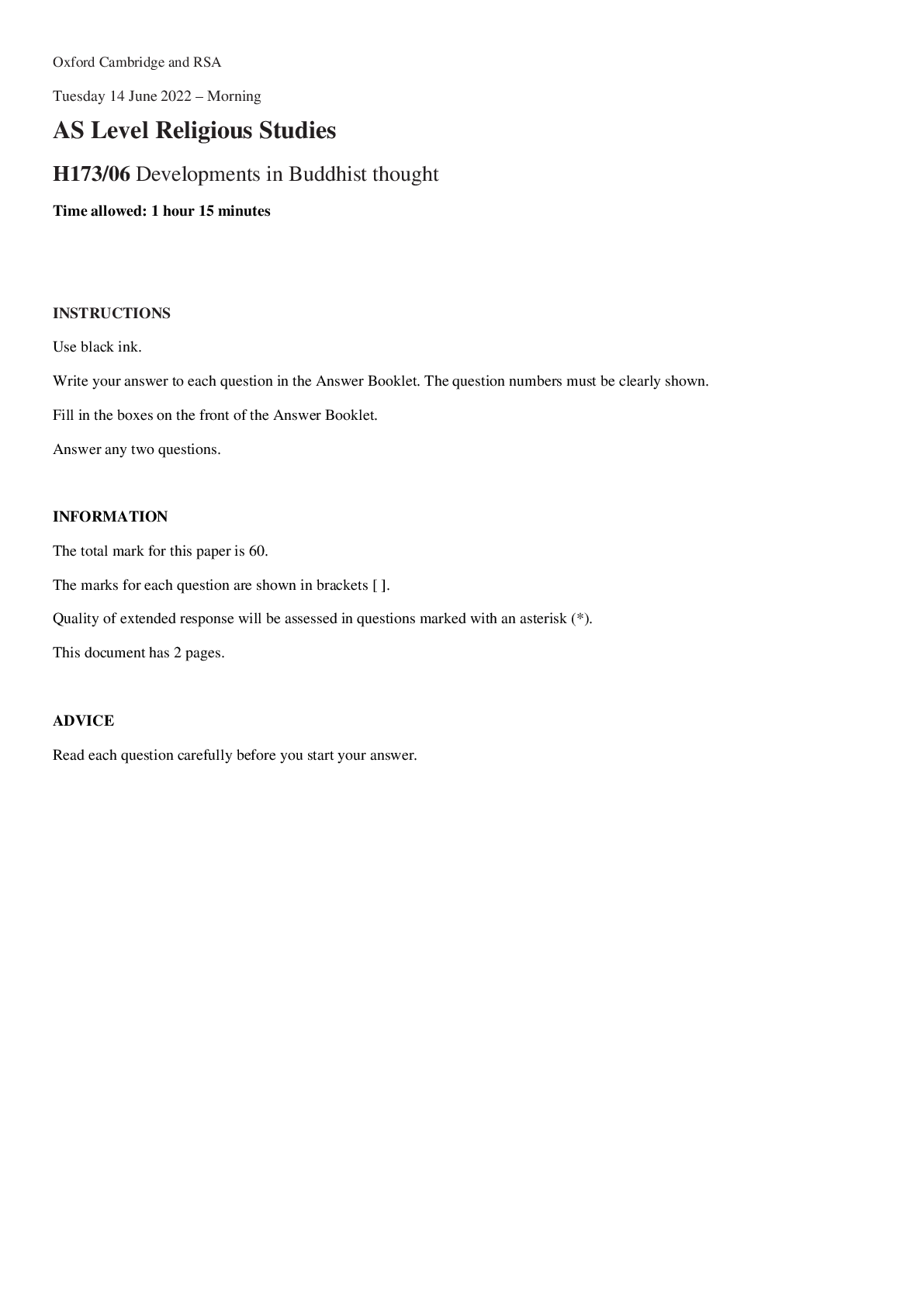




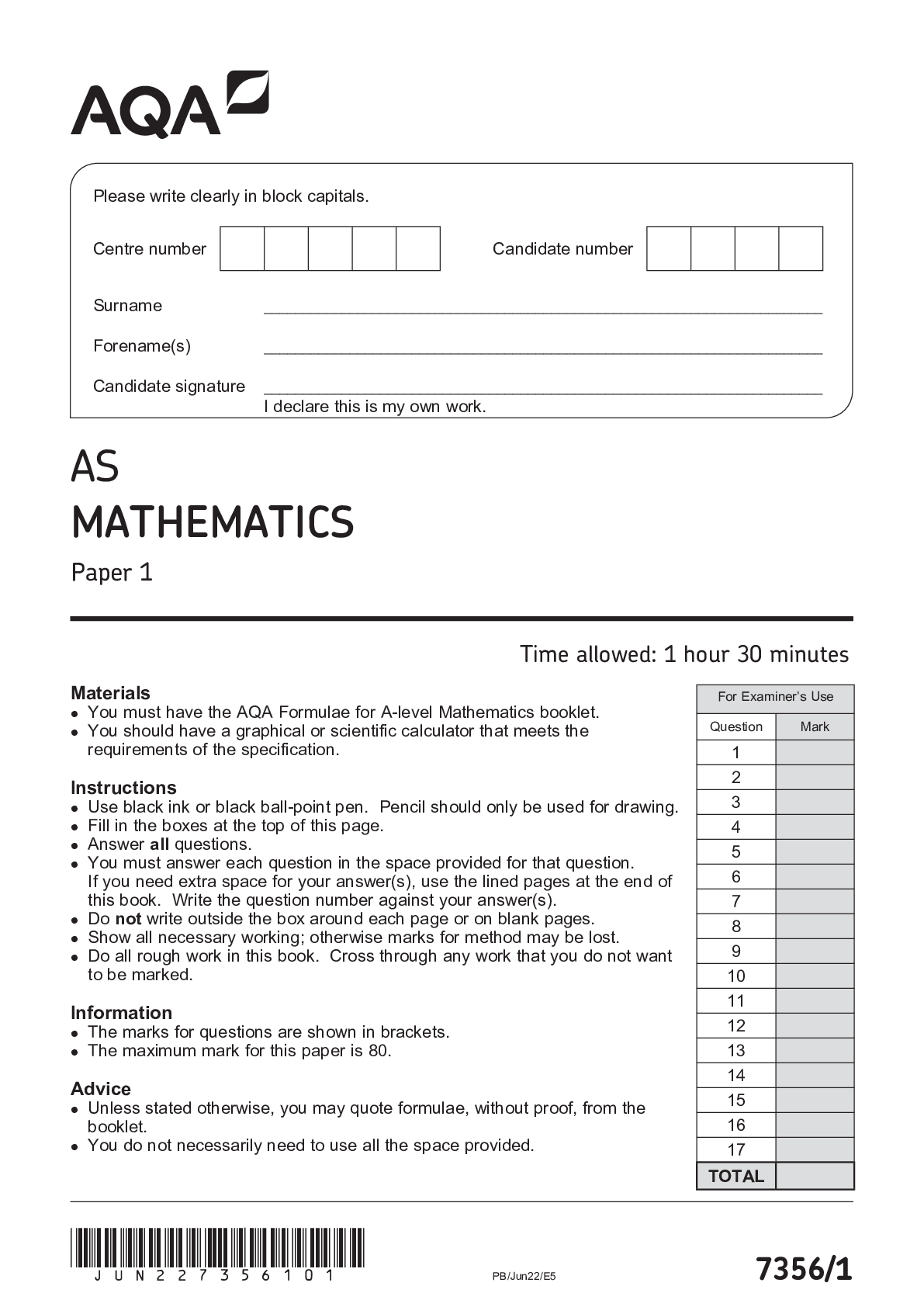
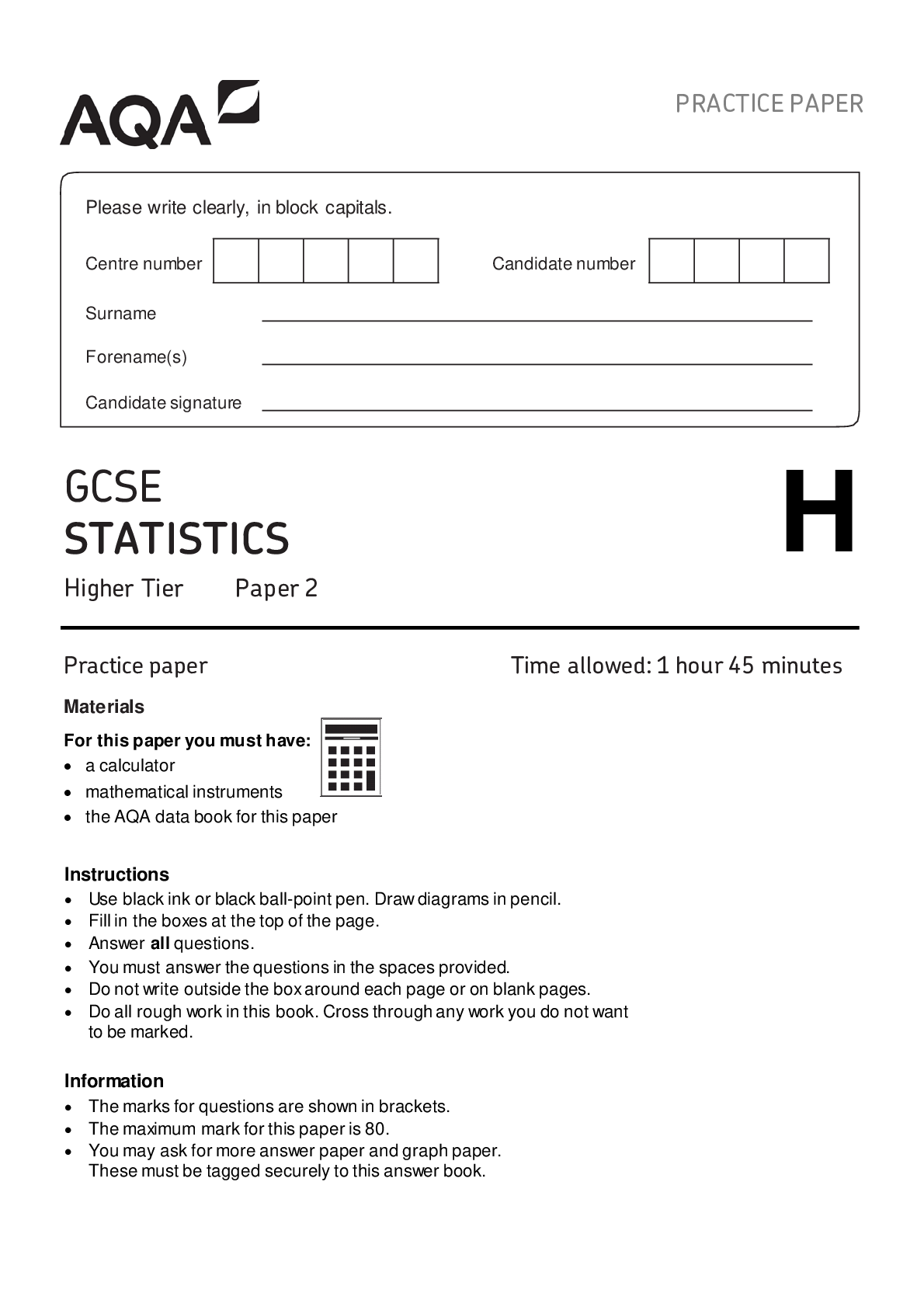


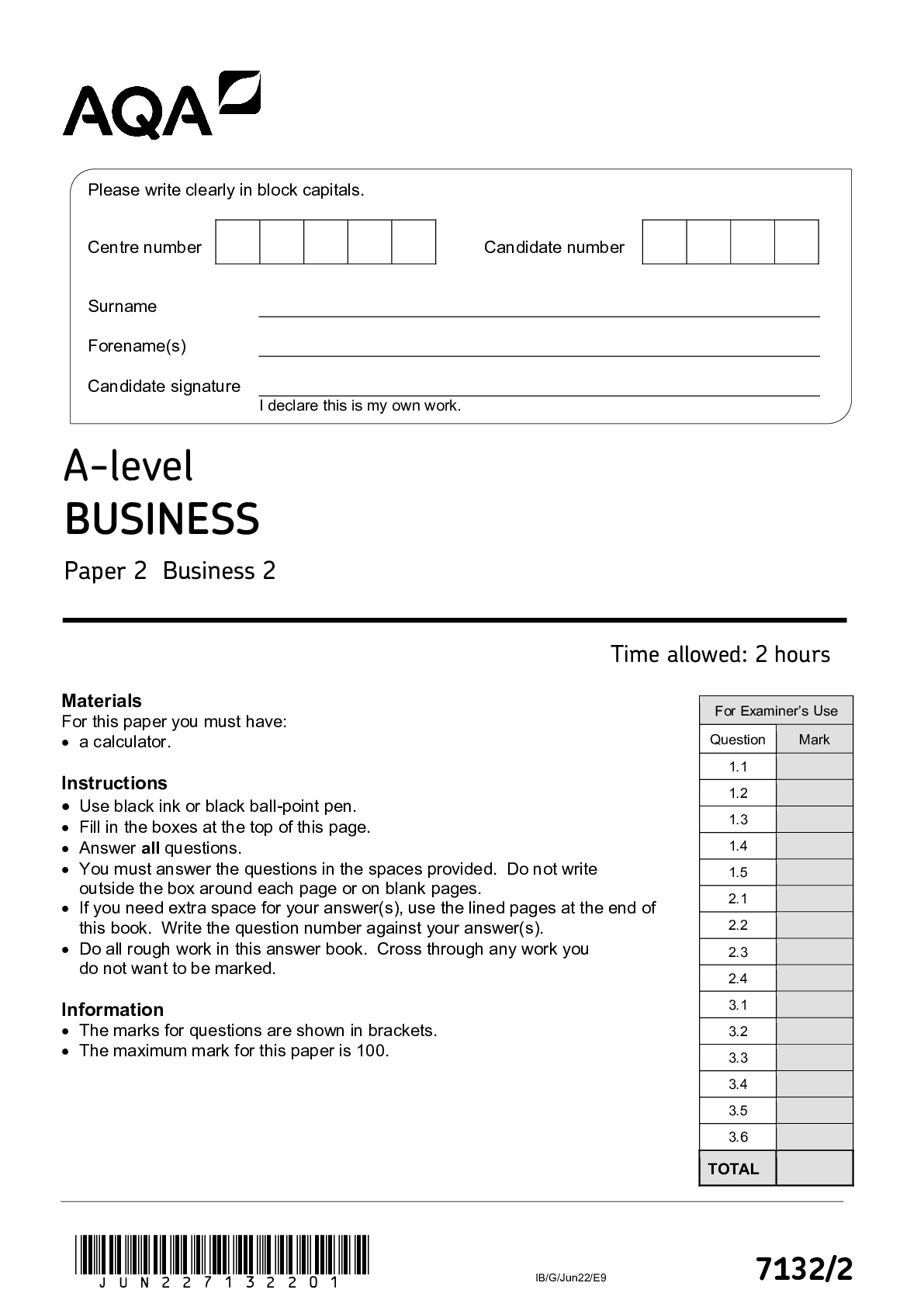
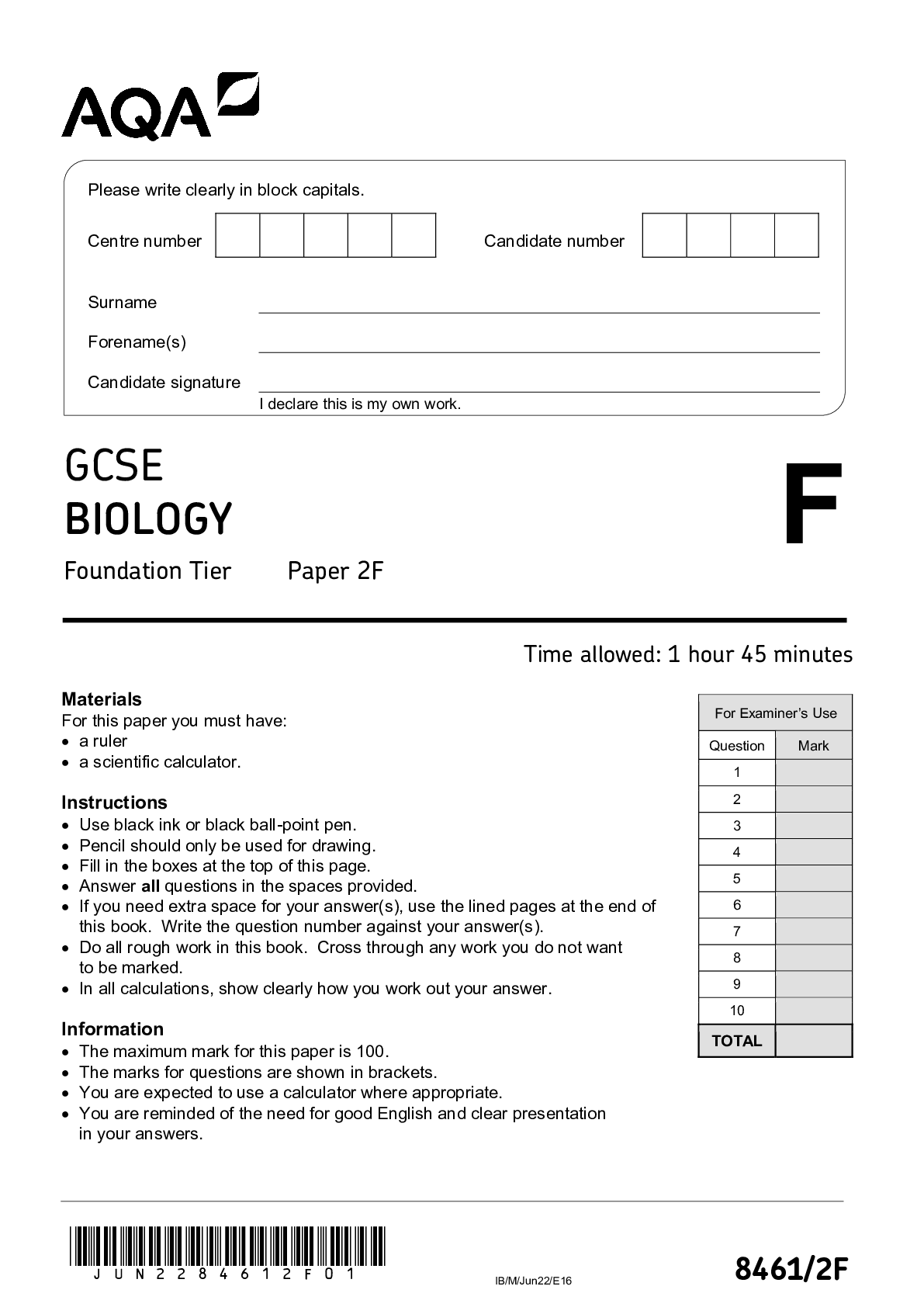
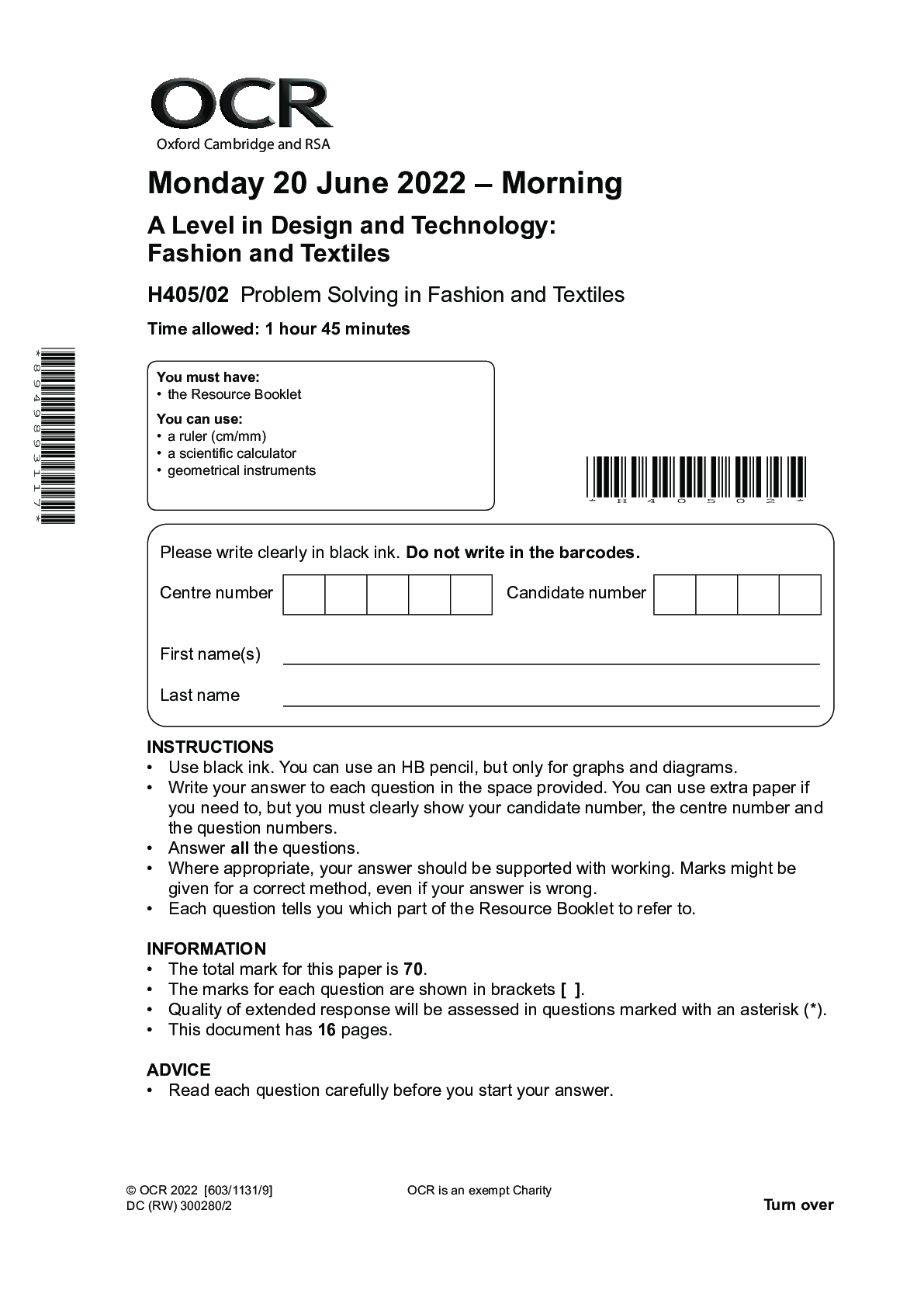

 H433-01 Fundamentals of Chemistry QUESTION PAPER Monday 13 June 2022 – Morning.png)
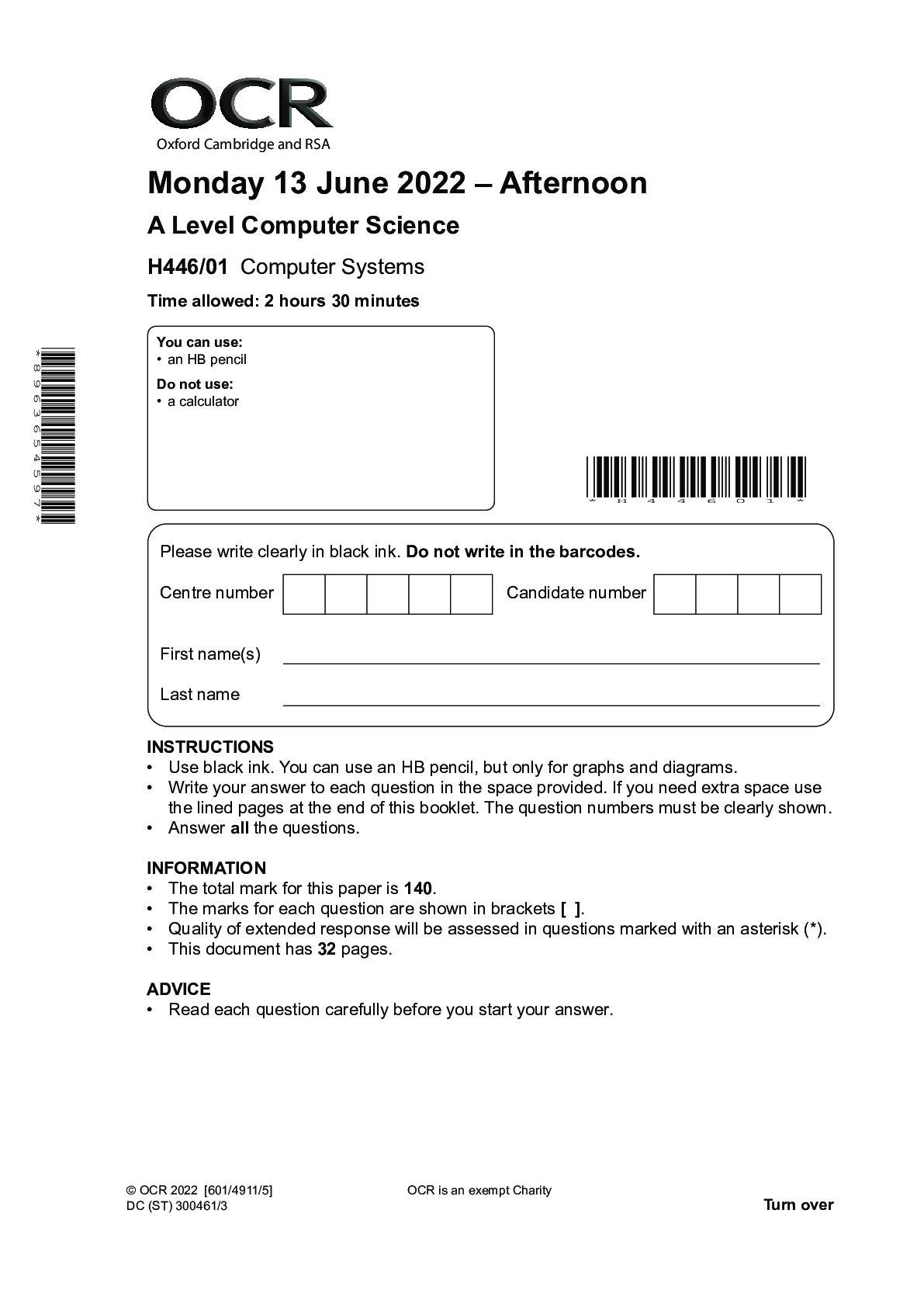
 H433-02 Scientific literacy in chemistry QUESTION PAPER Monday 20 June 2022 – Morning.png)



